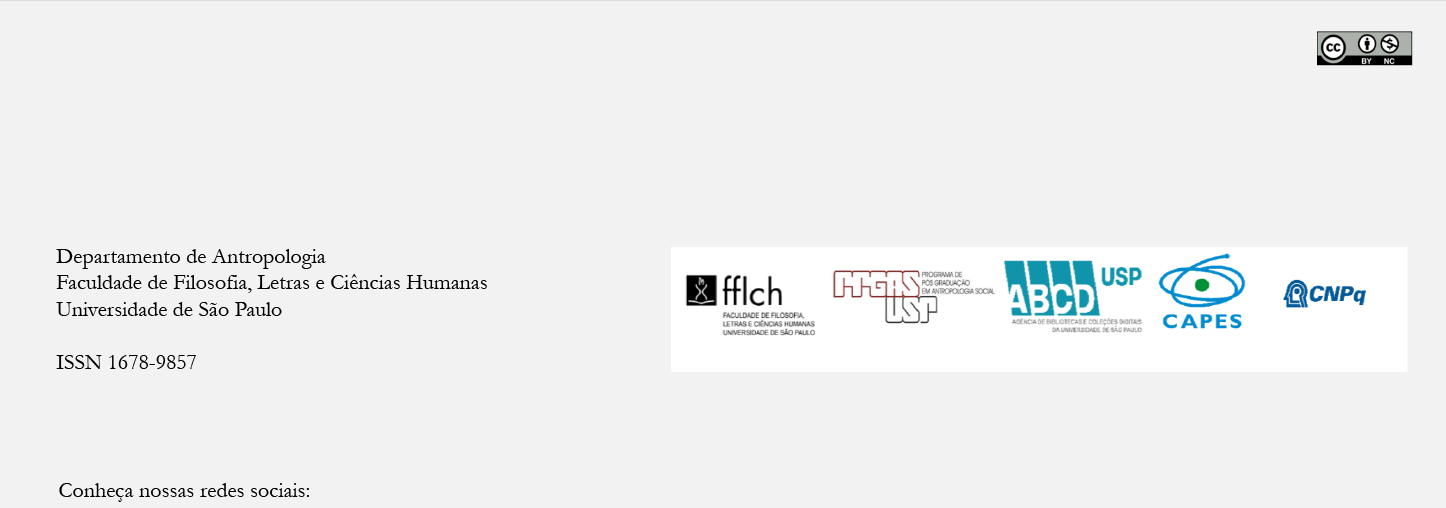Ethnographic inscriptions of milícia terror in Rio de Janeiro:extraction of profit, life and bodies
DOI:
https://doi.org/10.11606/1678-9857.ra.2022.219027Keywords:
terror, body, disappearance, intimacyAbstract
This article is inspired by anthropologist Michael Taussig’s provocation to “think-through-terror”. It seeks to explore, in an ethnographic key, terror devices and practices enforced in Rio de Janeiro by the police and illegal mafia-like paramilitary groups called milícias, in order to scrutinize the flows of power that connect disappearances and violent deaths to a language of terror. It starts with the accounts of the daughters of the “Mothers of Acari”, exploring the subjective and familial impacts of the eleven young people’s disappearance after the “Acari massacre”. The second part covers, via accounts included in a judicial process, inscriptions of terror in the modi operandi of milícias in gated communities of the Minha Casa Minha Vida housing program, located in Rio de Janeiro’s West Side. In its closing, the article demonstrates the connections established between terror, pedagogies of cruelty, spaces of death, and the logics of extraction of profit, life, and the body.
Downloads
References
Blair. Elsa. (2010). La política punitiva del cuerpo: “economía del castigo” o mecánica del sufrimiento en Colombia. Estudios Políticos. N. 36, Medellín.
Burgos, M. A utopia da comunidade. Rio das Pedras, uma favela carioca. Rio de Janeiro/São Paulo: Editora PUC-Rio/Loyola, 2002.
Cano, I. Seis por Meia Dúzia?: um Estudo Exploratório do Fenômeno das Chamadas ‘Milícias’ no Rio de Janeiro, em Justiça Global (org.) Segurança, Tráfico e Milícias no Rio de Janeiro. Rio de Janeiro: Fundação Heinrich Böll, 2008. pp. 48-103.
Cano, I. e Duarte, T. “No sapatinho”: a evolução das milícias no Rio de Janeiro (2008–2011). Rio de Janeiro: Fundação Heinrich Böll, 2012.
Chamayou, Grégoire. 2004. Las carcerías del hombre: historia y filosofia del poder cinegético. Santiago: Lom ediciones.
Colombo, Pamela. (2019). (Des)habitar: la inscripción espacial de la desaparición forzada en la casa. En: Kamchatka. Revista de Análisis Cultural. N. 13.
Feltran, Gabriel. (2021). Polícia e política: o regime de poder hoje liderado por Bolsonaro. Em: Blog Novos Estudos Cebrap. Acessado em 30/09/2023. https://novosestudos.com.br/policia-e-politica-o-regime-de-poder-hoje-liderado-por-bolsonaro/#gsc.tab=0.
Ferreira, Letícia Carvalho de Mesquita. 2019. Notas sobre a rotina: tempo, sofrimento e banalidade do poder na gestão de casos de pessoas desaparecidas no Rio de Janeiro. Revista Antropolítica. N. 47, Niterói.
Geni/UFF. 2023. Chacinas policiais no Rio de Janeiro: estatização das mortes, mega chacinas policiais e impunidade. Relatório de Pesquisa. Grupo de Estudos dos Novos Ilegalismos. Niterói: Universidade Federal Fluminense.
Geni/UFF e Instituto Fogo Cruzado. 2022. Mapa Histórico dos Conflitos Armados. Rio de Janeiro: Geni/UFF e Fogo Cruzado.
Leite, Márcia Pereira. (2012). Da “metáfora da guerra” ao projeto de “pacificação”: favelas e políticas de segurança pública no Rio de Janeiro. In: Revista Brasileira de Segurança Públia. São Paulo, v. 6, n. 2, 374-389.
Mbembe, Achille. 2017. Políticas da inimizade. Lisboa: Antígona.
Misse, Michel. (2017). Mercados ilegais, redes de proteção e organização local do crime no Rio de Janeiro. Estudos Avançados, 21 (61).
Reguillo, Rossana. 2021. Necromáquina: cuando morir no es suficiente. Guadalajara, México: ITESO; Barcelona, España: Ned.
Robledo, Carolina; Escorcia, Lilia; Querales, May-ek; García, Glendi. (2016). Violencia e ilegalidade en las fosas de Tetelcingo: interpretaciones desde la antropología. In: Resiliencia. Revista Enfocada a los Derechos Humanos y la Atención a Víctimas. n. 3, Julio/Septiembro.
Taussig, Michael. 1993. Xamanismo, colonialismo e o homem selvagem. Um estudo sobre o terror e a cura. São Paulo, Paz & Terra.
Zaluar, A. e Conceição, I. S. Favelas sob o controle das milícias no Rio de Janeiro, que paz?. São Paulo em Perspectiva, São Paulo, 2007, v. 21, pp. 89-10.
Downloads
Published
Issue
Section
License
Copyright (c) 2024 Revista de Antropologia

This work is licensed under a Creative Commons Attribution 4.0 International License.
Authors who intend to publish in this journal must agree with the following terms:
- a) Authors retain copyright and grant the journal the right of first publication. The work is simultaneously licensed under the Creative Commons Attribution License, which allows the work to be shared as long as the author and the initial publication in this journal are appropriately credited.
- b) Authors are authorized to sign additional contracts for non-exclusive distribution of the version of the work published in this journal (e.g., to publish it as a book chapter), as long as the author and the initial publication in this journal are appropriately credited.
- c) Authors are allowed and encouraged to publish and distribute their work online (e.g. on their personal webpage) after the editorial process, for this can generate productive changes as well as increase the impact and citation of the work. See The Effect of Open Access Publications.



